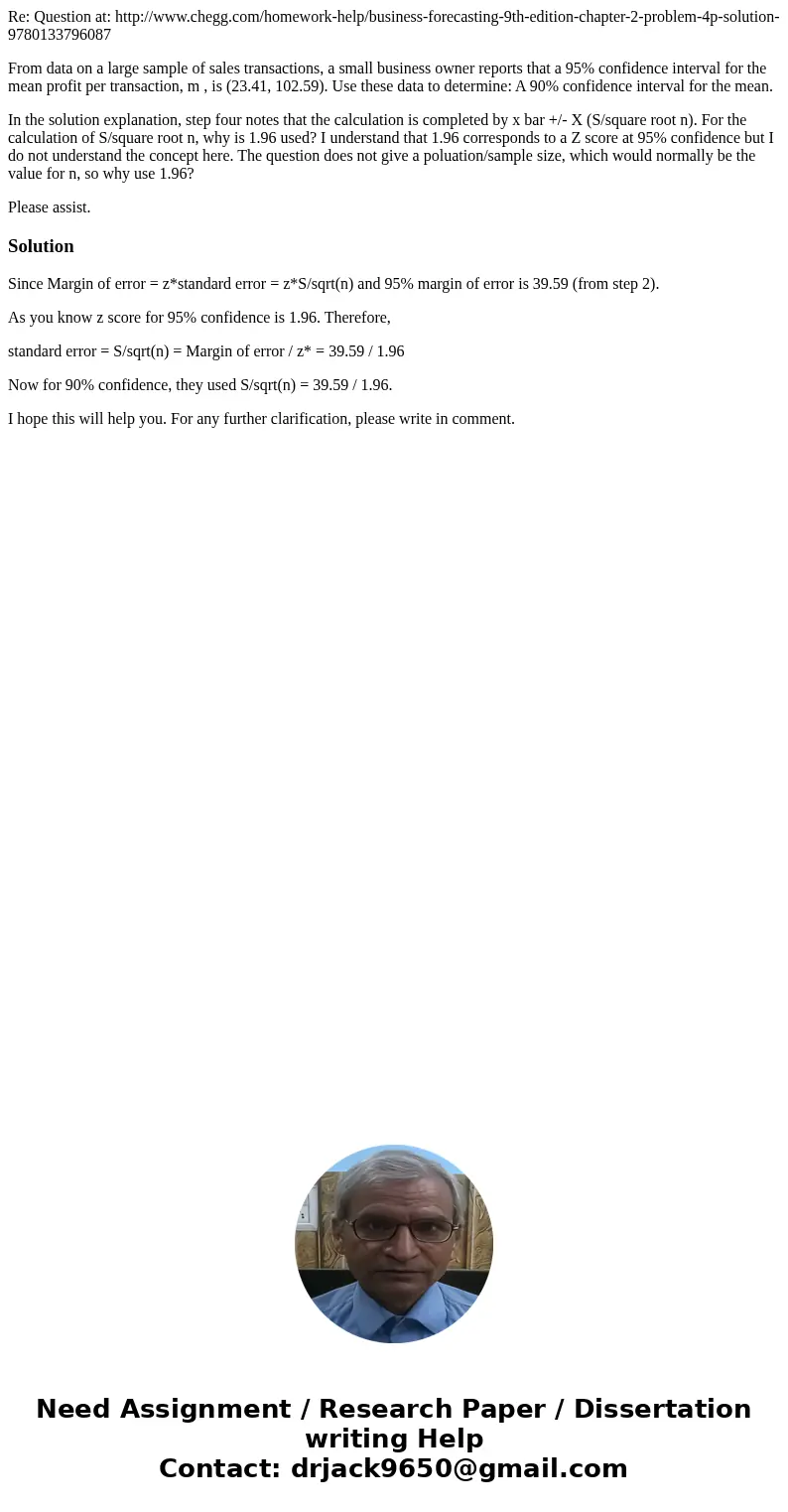Re Question at httpwwwcheggcomhomeworkhelpbusinessforecastin
Re: Question at: http://www.chegg.com/homework-help/business-forecasting-9th-edition-chapter-2-problem-4p-solution-9780133796087
From data on a large sample of sales transactions, a small business owner reports that a 95% confidence interval for the mean profit per transaction, m , is (23.41, 102.59). Use these data to determine: A 90% confidence interval for the mean.
In the solution explanation, step four notes that the calculation is completed by x bar +/- X (S/square root n). For the calculation of S/square root n, why is 1.96 used? I understand that 1.96 corresponds to a Z score at 95% confidence but I do not understand the concept here. The question does not give a poluation/sample size, which would normally be the value for n, so why use 1.96?
Please assist.
Solution
Since Margin of error = z*standard error = z*S/sqrt(n) and 95% margin of error is 39.59 (from step 2).
As you know z score for 95% confidence is 1.96. Therefore,
standard error = S/sqrt(n) = Margin of error / z* = 39.59 / 1.96
Now for 90% confidence, they used S/sqrt(n) = 39.59 / 1.96.
I hope this will help you. For any further clarification, please write in comment.

 Homework Sourse
Homework Sourse